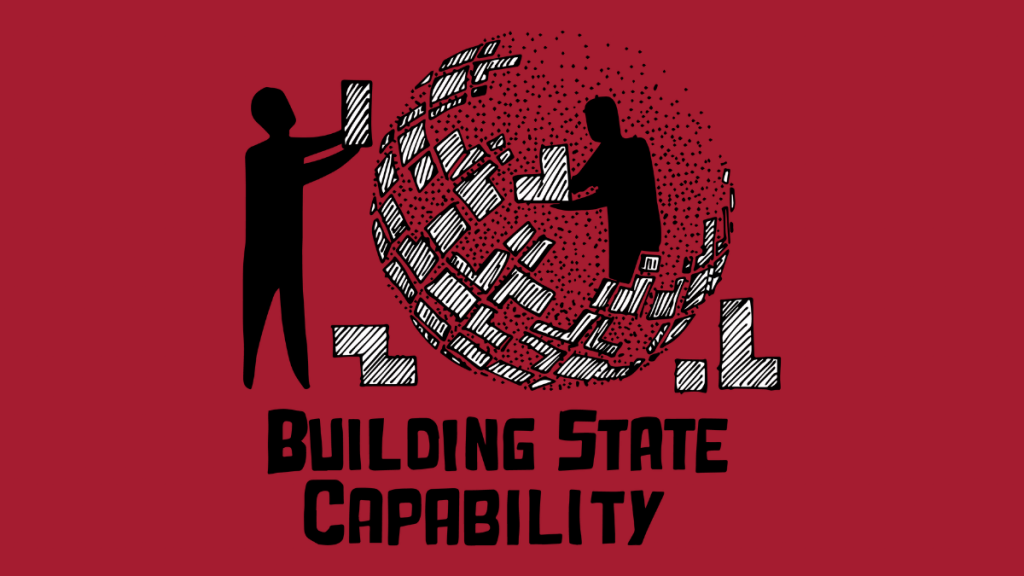Who leads? How do they lead? When do they lead? Why do they lead? Answers to these questions are very important in understanding how change happens. Change is about people and people need to be led. In this video, Matt Andrews, uses the story of Singapore to illustrate how true champions are the ones who…Continue Reading BSC video 33: Multi-agent leadership in action
BSC video 32: Who is the leader?
In a study of successful change, we interviewed 150 people in 12 different places and asked them “who is the leader?” Instead of the listing the 12 champions, they responded with 107 names. In this video, Matt Andrews, highlights that successful change requires someone to authorize the change, motivate, provide money, empower the people, define…Continue Reading BSC video 32: Who is the leader?
BSC video 31: Crawling together in Cambodia
Everyone agrees that building the rule of law is important. But building the capability of a justice system is a long and difficult process, often susceptible to isomorphic mimicry. In this video, Michael Woolcock, uses an example of legal systems in Cambodia to illustrate how the arbitration council had to learn how to negotiate together…Continue Reading BSC video 31: Crawling together in Cambodia
BSC video 30: Learning by crawling
In development, external best practice is almost always used as a solution. In reality, however, finding solutions to tough problems is not so simple. In this video, Matt Andrews, illustrates that if you crawl the design space, you might end up with a hybrid solution that is possible and also works in your context. You…Continue Reading BSC video 30: Learning by crawling
BSC video 29: Iteration is research in action
Iteration does not take a thousand years. You can immediately begin the process of learning through iteration and adaptation, after you define your problem. In this video, Matt Andrews, demonstrates the process of how you learn through iteration to ultimately solve your problem. You can watch the video below or on YouTube. If you are…Continue Reading BSC video 29: Iteration is research in action
Putting indicators to work in local governance reform
written by Michael Woolcock “What gets measured is what gets done.” It’s perhaps the most over-cited cliché in management circles, but on a good day an array of thoughtfully crafted indicators can indeed usefully guide decision-making (whether to raise/lower interest rates), help track progress towards agreed-upon objectives (to improve child nutrition), and serve to hold…Continue Reading Putting indicators to work in local governance reform
BSC video 28: Problem-driven sequencing

Most problems in the public sector are wicked hard and need to be deconstructed before they can be solved. In this video, Matt Andrews, builds upon the maternal mortality example and the ishikawa diagram to illustrate how you can sequence a reform in a contextually sensitive way, by involving the stakeholders to create a strategy…Continue Reading BSC video 28: Problem-driven sequencing
BSC video 27: Deconstructing sticky problems
Most problems in the public sector are wicked hard. It is like getting stuck in quick sand. In this video, Matt Andrews, uses an ishikawa or fishbone diagram to illustrate how meta problems can broken down into manageable problems that you can mobilize support for and ultimately solve. You can watch the video below or…Continue Reading BSC video 27: Deconstructing sticky problems
BSC video 26: Constructing problems that matter
A problem that matters is one that gets attention and mobilizes action. In this video, Matt Andrews, uses an example of program budget reform in an African country to illustrate how deconstructing problems can create the space to find and fit solutions. You can watch the video below or on YouTube. If you are interested…Continue Reading BSC video 26: Constructing problems that matter
BSC video 25: Real problem driven reform
Solving problems that matter ensure that you are doing something contextually relevant. In this video, Matt Andrews, uses an example of civil service reform in Uganda to illustrate how constructing local problems is the entry point to begin the search for solutions that ultimately drive change. You can watch the video below or on YouTube….Continue Reading BSC video 25: Real problem driven reform